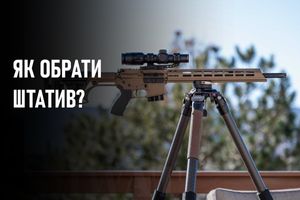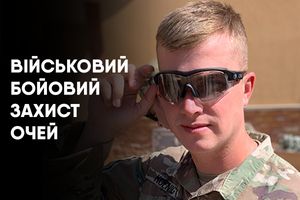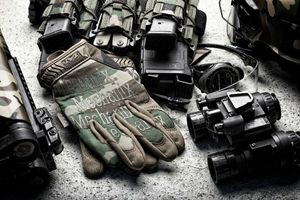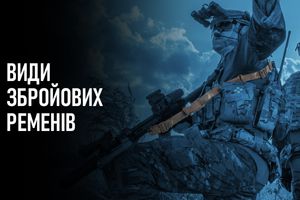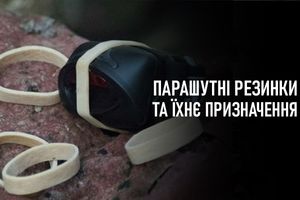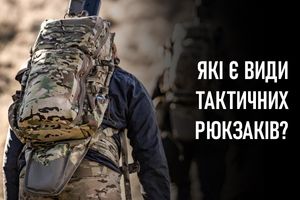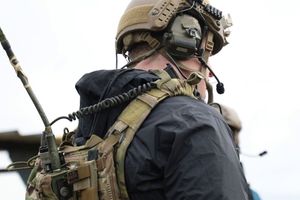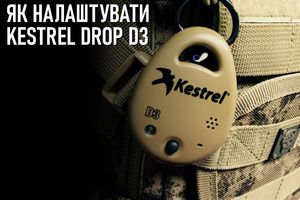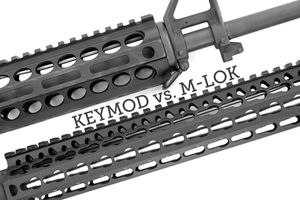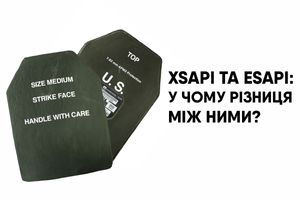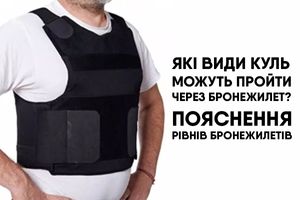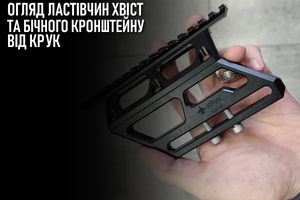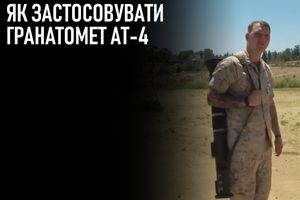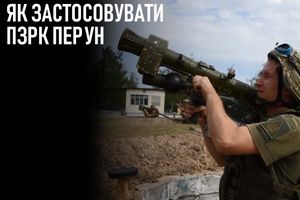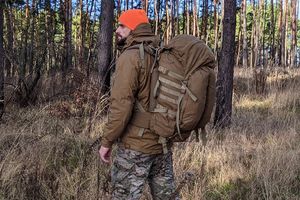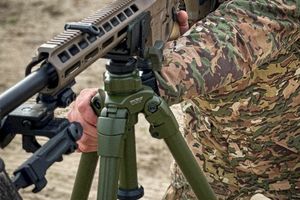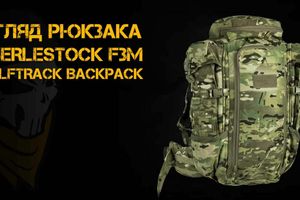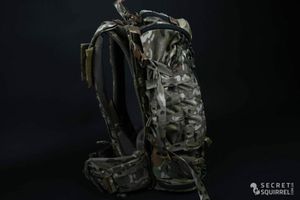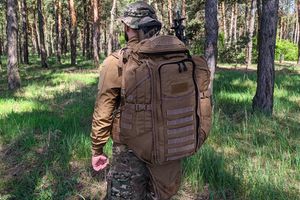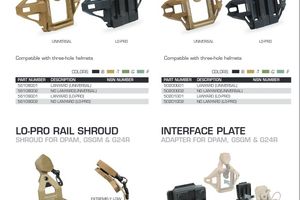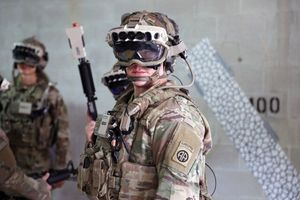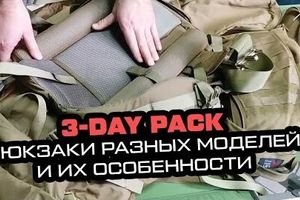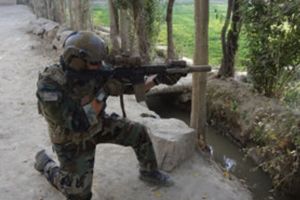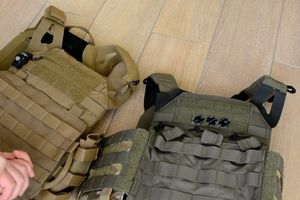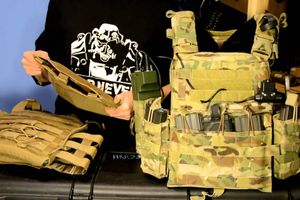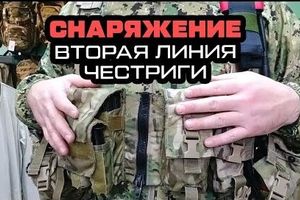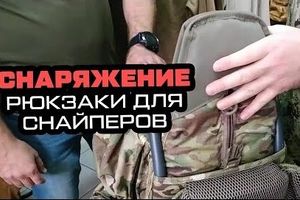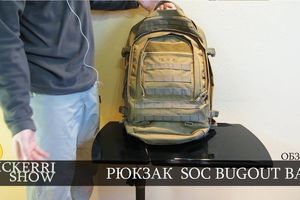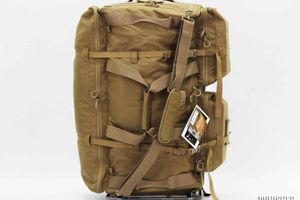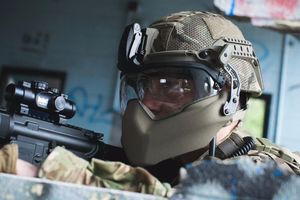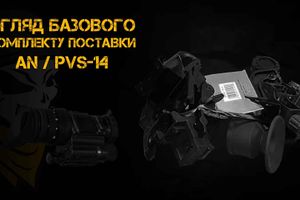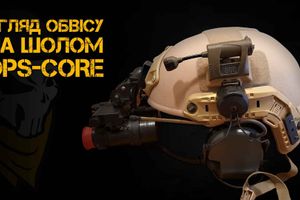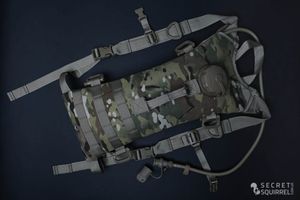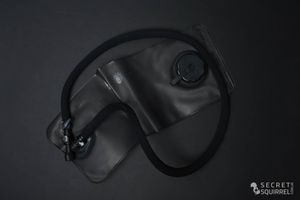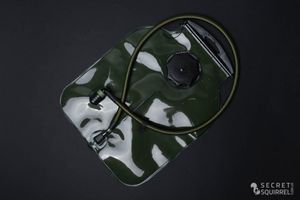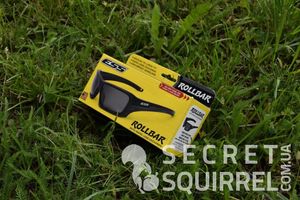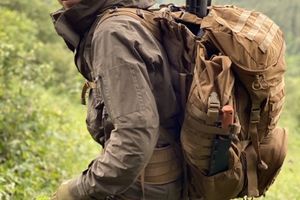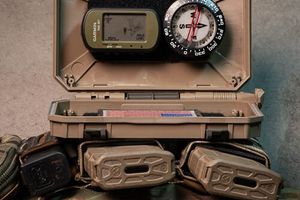Part 1: Block I and the early years in Iraq
This year (article published in May 2017) marks the 20th anniversary of the special modifications for the SSO (Special Operations Peculiar Modification or SOPMOD) program used in the US Army Special Forces (U.S. Army Special Forces)

Iraq, 2005: author with members of his Iraqi Strike Company. SOPMOD Block I equipped M4A1 with SU-231 (EOTech 552) and SureFire M951 light
I wore and used a M4A1 carbine equipped with this program throughout my career in ATP. One thing is certain: the M4A1 that I used the last time (in the fall of 2015 in Afghanistan) was equipped completely differently than during my first combat mission in Iraq, in 2003.
Author's note: The US Army Special Forces (SF) should not be confused with the MTR (SOF), which apply to all military special units (Army Rangers or Navy Seals, etc.). I will name most of the subjects of the SOPMOD program as they are widely known in AIS teams, by commercial names, and not by formal designations, like the SU-231 simply referred to as "EOTech", regardless of generation or model.
To better explain how SOPMOD influenced the lethal advantage over the enemy, I would like to share my experience of interacting with the program, and in particular, how different generations (blocks) of subjects worked during my six combat missions to Iraq and Afghanistan.
Early years SOPMOD
By the time I started my service at the ODA in the fall of 1998, the M4A1 carbines were in use by the MTR, and the supplies under the SOPMOD program (Block I) were already realized for the second year. In fact, investigators have already identified two subjects of the I block with problems.

Trijicon Reflex sight mounted on first-gen MK18 upper. SOPMOD Block II items are on rifle because this set-up was being used by SF soldier in Afghanistan in 2012. Even though Reflex sight was replaced 17 years prior, it looks like it had at least one diehard fan
The first such item was the Trijicon Reflex Sight collimator sight with tritium illumination. The aiming mark was very dim and barely noticeable, which did not make the sight good for CQB, where fast aiming is required. The army already had a good collimator sight with a red dot. Rangers and some other MTR teams have already used various Aimpoint collimator sights since the early 1990s.
Around this time, when the SOPMOD program decided to install Trijicon Reflex Sight, the Army chose the Aimpoint Comp M2 (received the army designation M68 CCO Close Combat Optic) as the first collimator scope for ordering into all combat units.

Typical set-up for 2003 invasion of Iraq. M4A1 outfitted with SOPMOD Block I: Knight’s Armament RAS Forearm with vertical grip, Aimpoint M68, and AN/PEQ-2 IR aiming laser.
When it comes to choosing which piece of equipment best meets the requirements, the regular Army and the SSO are often chosen differently.
The second weak link was the Visual Light Illuminator (VLI) illuminator in the visible spectrum, which had an absurdly short operating time - about an hour. Yes, and capable of giving a luminous flux of 90-110 lumens, on average there were very gloomy 90 lumens, which was very weak for a flashlight used in CQB.

Also, the plastic body of the flashlight turned out to be quite prone to breakage.
One year later, in 1999, we found the first stage of updates in the SOPMOD program, which just replaced these two problematic elements. The old Aimpoint Comp M2 and the SureFire model M951 flashlight replaced the old one. Fortunately, the Special Forces, belonging to the Army, was adopted by the M68, and not for some special tests among operatives, but only because all combat units began to be supplied with these sights. In general, this turned out to be a good time for SPN, when problems with the Trijicon Reflex Sight came to light, and the Aimpoint Comp M2 was already "on the way".

SOCOM heavy M4A1 barrel first adopted in 1999 with square cut-out in barrel. Since M203 40mm grenade launcher mount was designed around original M4 barrel, heavy barrel needed a thin point where mount could slip past it to lock in place
As it turned out, 1999 turned out to be very intense for the SOPMOD program. A new heavy barrel was adopted specifically for this program, to equip absolutely all M4A1 carbines that went into service with the SSO. Finally, the required number of Knight’s Armament flame arresters compatible with silencers was received to equip each rifle in the detachment, provided that the silencers were made back in 1997. Up to this point, silencers were available only on half of the MTR carbines.
CRANE SOPMOD MANUAL SOPMOD Manual
The CRANE SOPMOD manual was also published the same year.
Along with the technical data and instructions on how to properly install, configure, and use the various elements of the program, the manual was the first to propose advanced methods for using the M4 carbines, and ballistic information extending far beyond the army manual on shooting marks (Army Marksmanship manual FM23-9) .
The manual did not show anything new for the MTR. Just before the appearance of this publication, if there was a need to study these techniques, then long training sessions or a special training course were required. Now, for the first time, this guide has described these techniques in detail.
If you have never seen or read this manual, then I strongly recommend getting one of these in electronic or printed form. It contains all information dated, and covers all the first elements of the SOPMOD program around 1997, as well as methods and data on shooting at various distances and at moving targets, using collimator sights that have not lost relevance so far. In fact, I dare to suggest that only the latest issue of the army manual on accurate shooting (TC 3-22.9), released in the summer of 2016, contains as many techniques and techniques as the 17-year-old SOPMOD manual.
In 2000, another update miraculously appeared, which has become the standard for most AR over the past decade. This was not some kind of pre-scheduled update, it was developed in response to a technical malfunction in the M4A1 batch received by our unit. The correction of this malfunction led to the creation of this item.
To the glory of the O-ring seal!
In the spring of 2000, the first release of the M4A1 had already reached a five-year useful life, and was replaced by new rifles. Almost immediately, we began to experience problems with the release of shells on several newly acquired carbines.

Crane O-ring with five-coil extractor spring and black insert, also civilian version D-fender ring. At right is Colt’s newest extractor spring, which does not require an O-ring
As soon as it became known about this common problem with new carbines, the manufacturer’s response was pretty darn good.
Within a month, the Colt company assembled a team in our division to test and test each new carbine, regardless of whether it had problems or not. All problematic carbines were immediately replaced. And subsequently the problem was revealed. It turned out that during the chrome-plating of the bore, the coating of the barrel turned out to be too thick in the already narrow area of the breech, which caused the liners to get stuck during firing.
It was also found that if the extractor spring had more tension, it would be able to correctly remove the spent case even from the barrel with thicker chrome plating. In addition, the additional gripping force significantly improved the work of removing liners and cartridges from the contaminated breech chamber, which allowed the carabiner to work in dirty conditions longer without additional cleaning.
Thus, Crane developed the Reliability Parts Set, a set of three parts: a five-turn spring, an elongated blue rubber insert, and a rubber O-ring around the extractor spring to create additional effort.

Kuwait, 2003: Author practices on range just prior to invasion of Iraq. Block I equipped M4A1 with Aimpoint M68 and AN/PEQ-2. As for the full vertical grip … I know! But at the time this is how we were trained to grip it
I don’t recall the appearance of these kits by the time of the invasion of Afghanistan (2000–2001), but there were a lot of them in the Iraqi invasion of 2003.
Since Crane offered its spare part kit with a sealing ring, it has become standard not only for conventional M4A1, but also for short-barreled Mk18. Only in 2012 I saw an update for the O-rings in the form of a new Kolt spring ejector. Although it had fewer rings, but the thickness became larger, giving such a force to the spring that a sealing ring was no longer required.
If you purchased the Koltovsky AR in recent years, you will have such a new spring. In addition to thicker coils, it is easy to distinguish by its bronze color. If you have a silver spring installed, regardless of the manufacturer, make sure that there is a sealing ring around it. The extra power that this ring provides provides for less chance of removal problems, especially when using a not very clean weapon.
SPOMOD goes to war
Photo taken from the resource vk.com/usa_sfg
The same items of SOPMOD Block I, first released in 1997, were available in both the invasion operations in Afghanistan in 2001, and in Iraq in 2003. Although I did not participate in the invasion of Afghanistan, I took part in the invasion of Iraq in 2003, then my task was to move north from Kuwait and get to Baghdad.

Kuwait, 1998: very young-looking author with M4A1 outfitted with SOPMOD Block I ACOG and AN/PEQ-5 Visible Laser. M4A1 Carbine had only been in service a couple years, and SOPMOD items were only one year old.
As many of us expected to participate in city missions, and in CQB, with the exception of units operating in the open desert, we chose the M4A1 equipped with Aimpoint M68 sights.

Baghdad, 2003: author (second from left) with M4A1 and SOPMOD Block I items first issued in 1997. Aimpoint M68s were popular choice for many operators going into Iraq due to high expectation of CQB in urban areas
My M4 was equipped with all the available accessories of the program of that time: Knight’s Armament RAS forearm (first generation, with a pressure screw in the fly stand), a SureFire M951 flashlight, a PEQ-2 infrared target designator and a Knight’s Armament vertical grip. With this assembly, I also went on a second mission to Iraq in 2004.

Team Blue, Iraq second tour, 2004. SOPMOD Block I M4A1s with additional SOPMOD phased-in upgrades: Aimpoint M68s, SureFire M951 weaponlights and, if you look closely, you can see the extended charging handle latches of the Gas Buster charging handle. Author’s teammates on his left and right—two bad asses who always had his back.
All the elements of the SOPMOD program worked well, although I twice shot down the M68, dropping it on the concrete. I participated in fifty missions, in two of which I stumbled and fell on the cobbled streets. Every time my rifle fell, it hit the ground hard. Although the body and the glass of the sight remained intact, the fall completely brought down the sighting.

Iraq, 2005: M4A1 with SU-231 (EOTech 552). Although EOTech had been in the system for a number of years, author was not issued one until just prior to his third Iraq tour. Also visible is unpopular H&K steel 5.56mm magazine.
One of the subjects still did not avoid bad criticism. This is a Knight’s Armament vertical grip called the “Ghetto Grip” or “Broom Stick”. The handle used to weaken, if it is not tight enough to tighten, and there were reports that she completely flew from the bindings from too strong grip of soldiers who are in great stress in the heat of battle.
In addition, the handle may seem excessively long. In any case, I personally did not experience any problems with it while tightening it with a screwdriver. In fact, I refused to use the Knight’s vertical grip only in 2008, when I had the Magpul AFG corner handle.
And what about EOTech?
Double mag clamp-equipped M4A1 being utilized at Mid-South Institute of Self Defense circa 2005, during pre-deployment training in preparation for author’s third Iraq tour.
I did not mention the use of EOTech sights (SU-231), because even though some SPN and SSO squads had been using them since 2001, my squadron received them for supply only from 2005 (552 model), just before my third deployment in Iraq . This well shows the problem of the time gap between when items are put into service under the SOPMOD program and when they actually enter the supply of all MTR detachments.
Since SOPMOD uses all the MTRs, which in total amounts to several thousand operatives from four different branches of the armed forces, the supply process can be delayed for a long time (usually about a couple of years), so that equipment gets into all units.

Iraq, 2007
Another example of how much time may be required for full implementation in the SSO - Mk18 with a barrel of 10.3 inches. Although the version with a full-featured front sight was used by the Navy Seals from the early days of Iraq, only such a weapon reached me in 2010. And it was already a newer version, with a low-profile gas chamber.
Let's go back to EOTech.
The demand for these sights has grown due to the particular Aimpoint M68 sights. Sighting mark M68 is 4MOA, which is excellent in CQB, but when aiming at 300 meters, it turns into a circle with a diameter of 12 inches (30.48 cm). If you exceed a distance of more than 300 meters, the brand becomes too large and begins to overlap the very target you are trying to aim at.
The center point of the EOTech sighting mark is only 1MOA, which at 300 meters turns into a 3-inch mark on the target. The smaller point provides more accurate aiming, and allows you to easily aim at distances up to 500 meters. And in combination in the outer ring for fast shooting at CQB, such optics is perceived by many as universal and very convenient to use.

ODA3336 15 декабря 2008
The only option was the ACOG scope with fixed multiplicity, and without an additional collimator sight installed. There were none in the majority of the detachments until 2005.
As soon as my squadron received new items, I also switched from M68 to EOTech. True, when I began to use it in real combat, I realized that it would be better to use the old M68. During training, I had no difficulty focusing on a small central point, and without any problems hit six-inch targets. But in the first fight with EOTech, I saw only a red blurry spot when I tried to aim at a threat.
The outer ring of the brand, designed to facilitate quick shooting at close range, distracted me from finding the center point of aiming and pointing it at the target. In the stress of combat, the design of the EOTech brand has become too entertaining for me. I work better with the only point of sight Aimpoint.
Optional accessories
Other items that emerged in the early years of the war were: the new steel 5.56mm H & K stores, the cocking handles of the Gas Buster Charging handle (2004), and Crane SOPMOD buttstock butts made by Lewis Machine & Tool. I did not use this butt before it appeared in early 2006, during a regular business trip to Iraq.

Photo by Jeff Gurvich from Defense Review Review, Iraq 2005
The guys liked the new Gas Buster cocking handle, not because it seemed to cut off the surplus of the powder gas entering the receiver, but for having an increased latch hook, which makes it easier to search and grab in cramped conditions and gloves. Until now, the M4A1 is still being produced with this flawed shallow handle according to the Milspec standard.
Steel shops from H & K are not very popular in the Special Forces of the Army because they were too heavy. Fully stuffed steel shop weighed twice the size of aluminum. It would be possible to justify carrying more weight in patrols with reliability, but this was not the case. If you drop such a store on a hard surface (especially stony), dents will appear, so many, including me, have not seen any advantages in using them.
To be continued...
In the early years of the war on terrorism, the SOPMOD program had a great success: from a successful invasion of Afghanistan to lanes and urban areas of Iraq. The M4A1 carbines and the equipment for the program showed good results, but also opened the door for subsequent improvements.
As the war continued, the operatives wanted more performance from the M4A1 and SOPMOD accessories. This led to the creation of a second-generation optics and accessories program SOPMOD.
In the next issue of S.W.A.T. Magazine I will tell you about the implementation of SOPMOD Block II, and about my experience of working with him during my participation in the battles in Afghanistan.
A source: https://vk.com/@weapon_proof-istoriya-sopmod
S.W.A.T. 2017 Page 44 https://d2culxnxbccemt.cloudfront.net/app/uploads/swat/2017/07/24200221/2017_05_web.pdf










































































































































